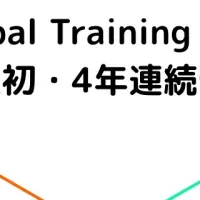
AI Language Translator Tool Market Achieves Remarkable 26.2% CAGR Growth and Expands Opportunities
AI Language Translator Tool Market Growth
The global AI Language Translator Tool market has witnessed impressive growth, driven by a surge in demand for efficient multilingual communication solutions. With a current valuation of USD 5.939 billion in 2023, the market is projected to expand dramatically, reaching an estimated USD 42.75 billion by 2030. This growth translates to a compound annual growth rate (CAGR) of 26.2% during the forecast period from 2024 to 2030.
Key Factors Influencing Market Growth
1. Technological Advances: The evolution of artificial intelligence (AI) and machine learning technologies has drastically improved the performance and reliability of translation tools. Accurate translations that capture context and nuances have become possible, enhancing user satisfaction across various applications.
2. Globalization: As businesses increasingly operate on a global scale, the necessity for precise and efficient translation services is evident. This is particularly crucial for multinational companies that require consistent communication across diverse regions. AI language translators enable the efficient handling of emails, reports, and customer communications, ultimately leading to improved productivity and reduced operational costs.
3. E-commerce Expansion: The rapid growth of the e-commerce sector has also contributed significantly to the market's upward trajectory. Online retailers need to provide localized content in multiple languages to cater to international customers, and AI-driven translation tools are essential for achieving this.
4. Integration into Mobile Devices and Applications: The widespread integration of language translation features into mobile devices and apps has broadened the accessibility of these tools. Consumers can now leverage real-time translation capabilities on the go, making cross-language communications seamless and straightforward.
Market Segmentation
The AI language translation tool market is segmented based on type and application. Major types include:
- - Text and Document Translation: Critical for business operations and legal documentation.
- - Voice Translation: Enhancing verbal interactions in international settings.
- - Image Translation: Enabling translations through visual content, which is especially useful in tourism and education.
These tools find applications in both personal and corporate environments, showcasing their versatility and wide-ranging appeal.
Trends Shaping the Future
- - Natural Language Processing (NLP): Advances in NLP are enhancing translation accuracy. AI-driven tools can now handle complex grammar and specialized terminology, significantly benefiting industries such as healthcare and legal.
- - Real-Time Translation Demand: The need for instantaneous communication in global business interactions, conferences, and customer service has heightened the demand for AI translation services.
- - Educational Exchanges: Growing international collaborations in academia underscore the importance of reliable translation solutions, facilitating research and learning across linguistic barriers.
Regional Insights
The North American region currently holds the largest market share, with a valuation of approximately USD 2.05 billion in 2023. Europe follows closely, responsible for about 22.40% of the global market share. Notably, Asia-Pacific, with China leading, is anticipated to experience rapid growth, particularly as its market for AI translation tools is expected to reach USD 10.96 billion by 2030, with an astonishing CAGR of 31.61% from 2024 to 2030.
Key Players in the Market
Several prominent companies are contributing to this landscape, including:
- - Microsoft
- - Google Cloud Translation
- - OpenAI
- - DeepL
- - Sonix
- - Grammarly
As these technologies continue to evolve, they promise to reshape how we interact in a diverse and interconnected world. The AI Language Translator Tool market is not only set to expand but also to innovate, meeting the ever-evolving needs of global users.
Topics Consumer Technology)










【About Using Articles】
You can freely use the title and article content by linking to the page where the article is posted.
※ Images cannot be used.
【About Links】
Links are free to use.